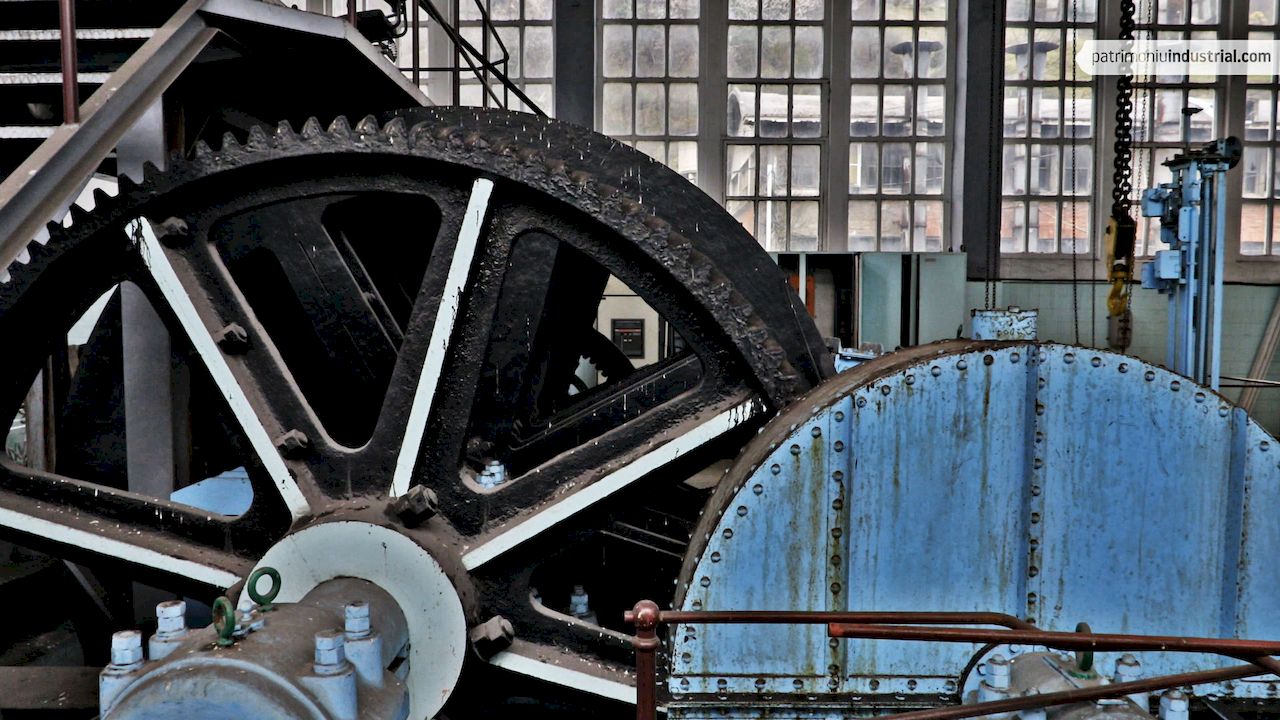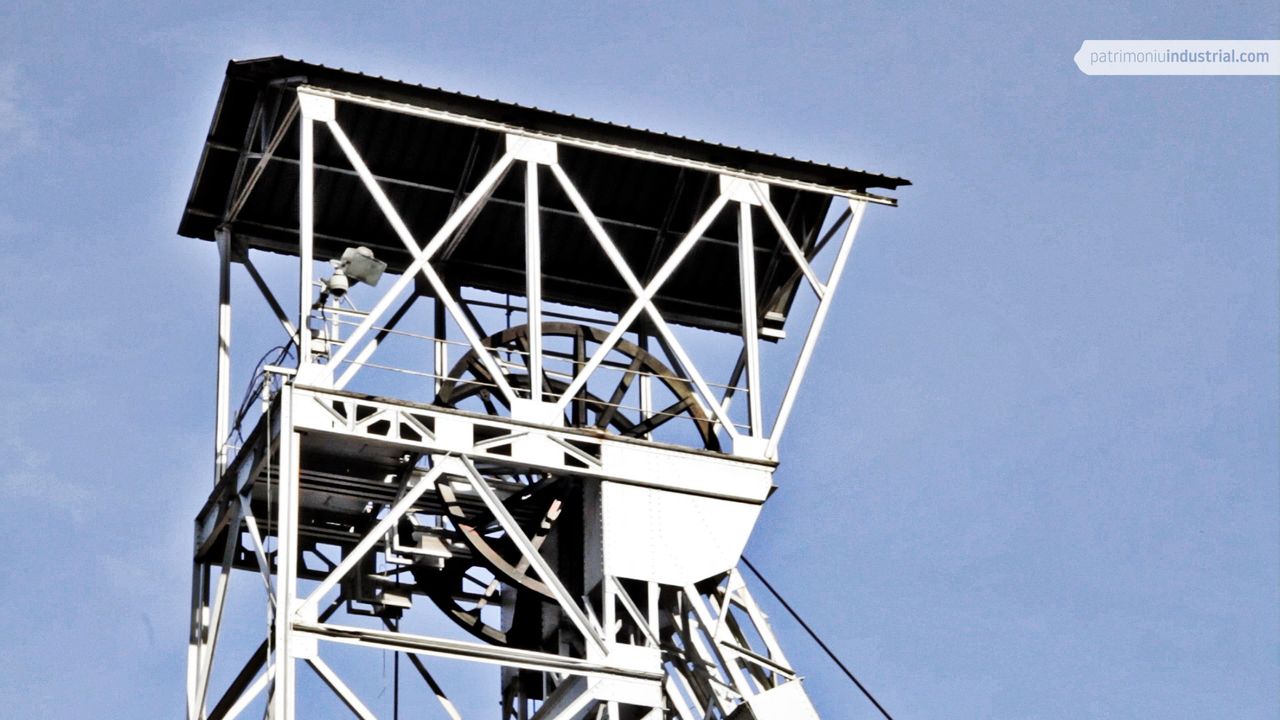The San Jorge mine was sunk by Sociedad Hullera Española (Spanish Coal Company) between 1940 and 1942 and it is one of the few Asturian examples of architectural intervention in the design of a mining facility. Enrique Rodríguez Bustelo designed a mine shaft following his work back then, which was based in modernist architecture, characterized by pure and simple shapes. Several important mobilizations against cutbacks and standing up for the future of mining took place here. This facility is now closed since 2018.
In the Aller river valley, mines were predominantly controlled by Sociedad Hullera Española since its foundation in 1892 and until its integration in the company Hunosa (Northern Coal Corporation). Sociedad Hullera Española freely handled and managed the territories, dividing them in three separate areas. The first area was the production space, comprising San Antonio, Santiago and San Jorge mine shafts. The second area was the residential space, located in the higher territories and comprising Bustiello Village and other residential cores. The third area, in the middle, constituted the expedition and administration space and was located in the estuary of the Aller river in the Caudal river, between the villages of Sovilla and Ujo. This area was constituted by a coal washing plant, a loading facility and an office complex.
The San Jorge mine was opened in 1942. It is one of the first vertical shafts sunk in the Aller river area, also being one of the few and valuable examples of architectural intervention in a regional coal mine. The architect was Enrique Rodríguez Bustelo, one of the most famous professionals in the 20th century Asturian architectural scene. He was responsible for several projects, such as the building where the machinery was kept, the compressor room or the offices, which still remain nowadays. These buildings hold a structural coherence as a whole, since they were all built using concrete, and they had ceramic tile façades. The outer walls were opened using huge vertically placed windows in the machinery building, and by means of horizontally placed ones in the rest of the buildings in order to leverage the interior spaces. The curved section roofs both in the interior and the exterior of the buildings are one of the most characteristic and cohesion-providing elements of the whole facility.
The headframe still maintains the original metallic riveted truss structure, thus being one of the last examples of this technique which would eventually lead to electric welding.
In 1995, the San Jorge mine closed its doors leaving the production core in the nearby Santiago mine shaft, which was provided with an extraction tower and a skip. Administrative tasks, compressed air related issues and the entrance to the facility still took place in the San Jorge facility until its permanent closure in 2018.

San Jorge Cage Door

Powerhouse

Pozo San Jorge – Landscape

San Jorge Mine Shaft



Comentarios recientes